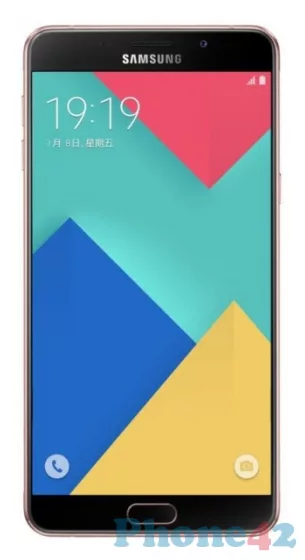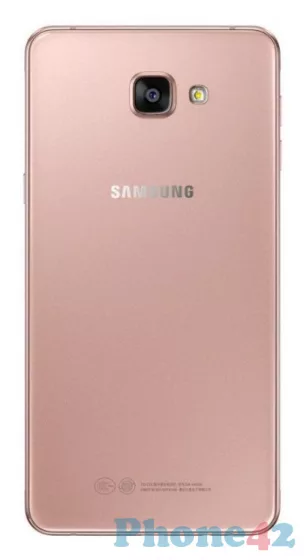
Samsung Galaxy A9: Pros and Cons
Samsung announced the launch of the Galaxy A9 smartphone in 2015. The manufacturer is offering this smartphone with 6 inch Super AMOLED display, Qualcomm Snapdragon 652 MSM8976 SoC, and 3 GB of RAM. It comes with Android OS v5.1.1 (Lollipop) out of the box, and a Li-Ion 4000 mAh, non-removable battery. The 6 inch AMOLED displays has fast response times. This smartphone has a single camera on the back (13 MP, 4128 x 3096 px, autofocus). Is this phone worth its price? Hopefully, it will become clear by the end of my review.
Table of Contents
- Samsung Galaxy A9 specifications
- Weight, dimensions, colors
- System, chipset, performance
- Display type, size, resolution
- Memory, storage
- Cameras, flash
- Connectivity, network, wireless
- Battery type, capacity, charger
- Features, sensors, specials
- Verdict, pros and cons
This article shares our personal experiences and thoughts about using the Samsung Galaxy A9 smartphone. We hope to offer helpful insights to others interested in this device. The specifications below are from the official manufacturer data, but we also consider user reviews. If you've seen any mistakes or things missing in these specifications, please let us know.

Samsung Galaxy A9 specifications
| Brand | Samsung |
|---|---|
| Name | Galaxy A9 |
| Model | SM-A9000 |
| Release date | 2015 |
Weight, dimensions, colors
| Weight | 7.05 oz |
|---|---|
| Dimensions | 6.37 x 3.19 x 0.29 inch |
| Colors | champagne gold, midnight black, pearl white |
| SIM type | Nano SIM |
The weight of Samsung Galaxy A9 is about 7.05 oz with battery. This is average for smartphones of the same size. Smartphones use a Nano SIM as a small chipcard for a subscriber identity module (SIM).
System, chipset, performance
| OS version | Android OS v5.1.1 (Lollipop) |
|---|---|
| SoC | Qualcomm Snapdragon 652 MSM8976 |
| CPU | Octa-core, Quad-core 1.8 GHz Cortex-A72, Quad-core 1.4 GHz Cortex-A53 |
| GPU | Adreno 510 |
The Samsung Galaxy A9 comes with Android OS v5.1.1 (Lollipop) out of the box. Google has integrated many services with Android. These include Google Maps, Gmail, and Google Drive. It's a powerful Qualcomm Snapdragon 652 MSM8976 octa-core processor. It can handle complex tasks and run many applications. Qualcomm's Snapdragon processors work with Adreno GPUs. The processors are designed for the GPUs.
Display type, size, resolution
| Display type | Super AMOLED |
|---|---|
| Screen size | 6 inch |
| Resolution | 1080 x 1920 px |
| Multitouch support | yes |
The 6 inch phone comes with AMOLED display. Smartphones use the AMOLED, which is a type of OLED display. The 6 inch display should be big enough for your needs. It will make viewing comfortable. This is true whether you're reading, browsing, or watching. The size of the screen is measured diagonally, from corner to corner.

Memory, storage
| RAM | 3 GB |
|---|---|
| Internal storage | 32 GB |
| Memory card slot | microSD |
The smartphone has 3 GB of RAM. It can run many apps at once without much lag or slowness. Having more RAM alone does not guarantee better performance. Generally, a smartphone should have a minimum of 32 GB of internal storage. The Galaxy A9 has 32 GB. You can expand the internal storage (32 GB) with a compatible microSD card.
Cameras, flash
| Main camera | 13 MP, 4128 x 3096 px, autofocus |
|---|---|
| Flash | LED |
| Selfie camera | 8 MP |
The single camera can be enough for many smartphone users. It depends on their photography needs and preferences. The Galaxy A9 does not have optical image stabilization (OIS).
Connectivity, network, wireless
| GSM 2G bands | 850 / 900 / 1800 / 1900 |
|---|---|
| Network coverage | 2G / 3G / 4G |
| Wi-Fi | Wi-Fi 802.11 a/b/g/n/ac |
| Bluetooth | v4.2, A2DP, LE |
| GPS | A-GPS, GLONASS, Beidou |
| NFC | yes |
| FM radio | yes, with RDS |
| USB | microUSB 2.0 |
| Headphone | 3.5 mm jack |
The Samsung Galaxy A9 supports 4G/LTE networks. This phone like all modern smartphones, is capable of connecting to Wi-Fi networks. The Galaxy A9 smartphone is capable of connecting to Bluetooth devices. This phone has a built-in GPS. This phone is NFC (Near Field Communication) capable. The 3.5 mm headphone jack allows you to connect wired headphones or earphones to the device.
Battery type, capacity, charger
| Type | Li-Ion 4000 mAh, non-removable |
|---|
The Li-Ion 4000 mAh, non-removable battery gives the smartphone a good battery backup. The Li-ion is a low maintenance battery. It does not need periodic full discharge. The battery of Galaxy A9 isn't removable without voiding the warranty.
Features, sensors, specials
| Sensors | accelerometer, compass, fingerprint, gyroscope, proximity |
|---|---|
| Specials | Dual SIM |
Today, smartphones come with many sensors. They help make the user experience better. The accelerometer provides information about the smartphone's movement in three axes. These are X (horizontal), Y (vertical), and Z (depth). The Galaxy A9 phone has a fingerprint scanner. Dual SIM is great for businesses. They want to give staff a device with separate numbers and bills for personal and business use.
Verdict, pros and cons
Every phone has its strengths and weaknesses, and this Samsung phone is no exception. As with any device, there are aspects that shine and others that fall short. By examining both sides, we can paint a complete picture of what this phone has to offer. Let's explore its standout features and areas for improvement. Remember, this is just my opinion, and yours might be different.
Pros
- Super AMOLED display
- appropriate screen size
- microSD slot
- Dual SIM support
Cons
- single camera setup
- no OIS function
- no 5G support
- no Type-C USB port
- low-capacity battery
Please let us know if you find incorrect information or something isn't working. Also, tell us if you have a suggestion for improvement.
 I'm Lucas Bradley, the founder of the Phone42.com site. I love technology, especially smartphones, and I've been working with tech stuff for more than 20 years. This means I've seen a lot of changes and have learned a bunch about what makes a good phone. On Phone42.com, I look at all kinds of phones. They can be from big, well-known companies or new ones trying to make their mark. I want to help people understand what's new and cool in the world of smartphones, in a way that's easy to get.
I'm Lucas Bradley, the founder of the Phone42.com site. I love technology, especially smartphones, and I've been working with tech stuff for more than 20 years. This means I've seen a lot of changes and have learned a bunch about what makes a good phone. On Phone42.com, I look at all kinds of phones. They can be from big, well-known companies or new ones trying to make their mark. I want to help people understand what's new and cool in the world of smartphones, in a way that's easy to get.